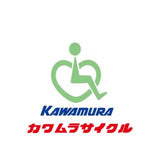Enhance patient well-being and minimize the risk of bed sores with these effective prevention techniques. Learn how to provide optimal care by implementing proper positioning, skincare routines, and specialized support surfaces. Explore our comprehensive guide to bed sore prevention and ensure the utmost comfort for patients.
According to various research source such as Mayo Clinic, Bedsores, also called pressure sores or pressure ulcers, decubitus ulcer are the result of an injury to skin and its underlying tissues. This blog will share information on bedsore treatment, bedsore prevention, bedsore relief, bedsore symptoms, pressure sore management.
What Are Bedsores? Understanding Causes
Bedsores are caused by pressure on the skin that limit blood flow. Often, those who are bedridden or in wheelchairs are the highest risk since they have a hard time moving and getting proper blood flow to all areas of the body. Diet also plays a key role, as bad nutrition and improper hydration can result on the skin and tissue breaking down.
According to medical journal, National Library of Medicine, below are the common Causes of Bedsores:
Pressure.
As the living tissues are not static, the way they are distorted change over time. When constant pressure is maintained, soft tissues mould themselves to accommodate the external shape. This is known as tissue creep.
Limited mobility.
With limited mobility, the continuous pressure on certain body parts can reduce blood flow to the tissues. Blood flow is essential for delivering oxygen and nutrients to the skin and underlying tissues. Without adequate blood flow, these tissues can become damaged and start to deteriorate. Bedsores often develop in areas with minimal muscle or fat, such as the hips, heels, and tailbone. To prevent bedsores, it is crucial to change positions frequently and use pressure-relieving devices like specialized mattresses and cushions.
Friction.
Friction occurs when the skin rubs against a surface, such as when seniors are repositioned in bed or moved in a wheelchair. This constant rubbing can break down the skin, especially in older adults whose skin tends to be thinner and more fragile. To minimize friction, caregivers should handle seniors gently and avoid rough movements. Using soft clothing and bed linens can also help reduce the risk of friction-related bedsores.
Shear.
Shear happens when the skin moves in one direction while the bone underneath moves in another or remains stationary. An example of this is when a person slowly slides down in a bed or chair, causing the skin over the tailbone or shoulder blades to stretch and tear. This stretching can damage the skin and underlying tissues, leading to bedsores. To prevent shear injuries, ensure that seniors are properly positioned and supported, using pillows or wedges to maintain alignment and prevent sliding.
What are the symptoms of pressure sores?


There are four (4) stages of pressure sores.
- The first stage is the mildest, marked by pain, burning or itching in a specific area.
- The second stage begins when the sore begins to form below the surface of the skin, forming an open wounds or blisters.
- In stage three, the sore reaches the fat tissue under the skin.
- The final stage is the most severe; the sores may begin to affect muscles and ligaments and express with symptoms such as black skin, deepening of the sore, and further sign of infection.
How to Prevent Bedsores: Tips for Caregivers and Patients
1. Preventing Pressure Sores: The Importance of Frequent Position Changes
One effective way to prevent pressure sores is by changing positions frequently. Here’s why this practice is crucial and how you can implement it effectively.
Why Changing Position Frequently Matters
When you change your position often, you reduce the continuous pressure on specific areas of your skin. This helps to maintain healthy blood flow, preventing the development of pressure sores. Healthcare professionals typically recommend repositioning every two hours to minimize the risk of pressure ulcers.
How to Implement Regular Position Changes?
Set a Schedule: Establish a routine where you change positions every two hours. This can be done by rotating through different positions:
First Two Hours: Lie on your right side.
Next Two Hours: Lie flat on your back.
Following Two Hours: Lie on your left side.
Repeat the Cycle: Continue this rotation throughout the day and night.
You can consider to use this reposition belt or Anti-bedsore bed turnover assistant aid, pillow assisting to turn patient in bed and hold in position.

Use a Notebook: Keeping track of position changes can be challenging, especially if you are caring for someone else. Use a notebook or a repositioning chart to mark each time a position change is made. This helps ensure that no position is held for too long and that the schedule is followed consistently.
Set Reminders: Use alarms or reminders on your phone or a clock to alert you when it’s time to change positions. This can help maintain the schedule and prevent accidental lapses.
Involve Caregivers: If you have caregivers, ensure they are aware of the repositioning schedule and the importance of maintaining it. Consistent communication and documentation can help provide the best care and reduce the risk of pressure sores.
2. Inspect the skin daily
Inspect the skin daily to see for warning signs for bedsores as this is necessary for bedsore prevention. You may feel uncomfortable or invasive to inspect your loved one’s body so closely, but it’s necessary to catch them early.
When repositioning the patient, take the opportunity to observe any changes in their skin condition and document them in a notebook. For example, you might note, "3 cm pink discoloration on left elbow at 10 AM".
Learn how to assess and document skin condition, identify early signs of bed sores, and implement necessary interventions promptly with consultation from healthcare professional. Keep skin clean and dry.
Wound Care: Cleaning the wound with saline, applying dressings, and keeping the area clean and dry.
PRACTICE EFFECTIVE SKIN CARE:
If the skin is not broken, gently wash the area with a mild soap and water.
Clean open sores on the skin with salt water (saline, which can be made by boiling water with 1 teaspoon of salt for 5 minutes and kept cooled in a sterile container).
Apply a thin layer of petroleum jelly/body lotion/moisturizer and then cover with a soft gauze dressing (to protect wound from body fluid).
Be sure to keep urine and stool away from affected areas.
Check it out options we have for bedsore products including Creams and Ointments at here.
3. Utilizing Specialized mattress and Support Surfaces:
Discover the benefits of specialized support surfaces, such as pressure-reducing mattresses and overlays. Explore different types of support surfaces and their role in redistributing pressure, promoting airflow, and preventing bed sores. Most of physician will recommend to use ripple mattress or hospital air mattress for bedsores.
Are you tired of dealing with painful pressure sores? TREAT-EEZI has the solution for you.
With the advancement of technology new discoveries were made where the world of fabric technology showed a significant growth where polyester fibres could support the body without the need for pumps as a possible solution.
A fabric that could be pressure mapped below capillary blood flow at just 28mm Hg was created allowing a steady blood flow at even under the most direct pressure points of the body when lying on a normal bed. This breakthrough and revolutionary fabric called the Treat Eezi Community Pressure Ulcer Overlay not only prevents but heals bed sores. If you look at the alternatives such as air beds and gel pads, the Treat-Eezi is a much nicer product to use especially in the summer months reducing sweating and keeping people cooler.

The main difference between an electric alternating air bed (ripple mattress) and a Treat Eezi static air mattress is as follows: a ripple mattress uses power to move internal parts, creating a massaging effect and causing pressure fluctuations that may be uncomfortable, noisy, and may increase heat and sweating due to the plastic membrane. This ripple matttress also require continuous electricity, adding to costs. In contrast, the Treat Eezi static mattress operates without electricity, providing stable, quiet support that prevents skin shearing and maintains lower peripheral blood flow pressures. It's a safe, cost-effective solution proven to prevent and help heal grade 4 ulcers.
The PrimaCare 10 mattress is a 14-cm-high, single-layer mattress crafted from polyether foam, designed specifically with bedsore prevention features on the upper side. This specialized profile ensures enhanced comfort and protection against pressure ulcers, making it an ideal choice for individuals requiring long-term bed care.
4. Incontinence management and care.
If the patient has incontinence, do everything you can to prevent exposing the skin to moisture and bacteria. This includes regularly scheduled help with urinating, of making diaper changes and putting lotions on the skin. Skin becomes more vulnerable when it’s exposed to urine or stool, even for short periods of time. It is often recommended to change adult diapers every 3 to 4 hours to maintain skin hygiene and prevent rashes or infections. This interval can vary depending on the individual's needs and the capacity of the diaper used. However, diapers should be changed as soon as they become soiled or wet.
Many modern adult diapers come with wetness indicators. Caregivers can use these to determine when a change is necessary, ensuring the diaper is not left on too long but also avoiding unnecessary changes. In the market, there is portable urine detector that checks when to change diapers easily and conveniently without putting stress on the elderly while wearing clothes.
5. Promoting Regular Movement and Exercise:
Learn about the significance of regular movement and exercise in preventing bed sores. Discover appropriate exercises for immobile or bedridden patients, including range-of-motion exercises and muscle-strengthening activities. Try encouraging mild movement and stretching to increase the blood flow and certain low impact stretches that can be safely performed in a bed or wheelchair.
6. Collaborate with Healthcare Professionals:
Understand the importance of collaboration with healthcare professionals, including nurses, physicians, and wound care specialists. Learn how to create a comprehensive care plan tailored to the individual needs of each patient. Get immediate care if you notice signs of infection (fever, spreading redness, swelling, or pus). Medications: Pain relief and antibiotics to manage infections. For advanced sores, skin grafts or flap surgery might be necessary to close and heal the wound.
7. Education and Training for Caregivers:
Discover the significance of education and training for caregivers in preventing bed sores. Learn about proper techniques, warning signs, and proactive measures to implement on a daily basis. Ensure caregivers are equipped with the knowledge and skills necessary for effective prevention.
8. Nutrition
Choosing a healthy diet for the elderly and keeping their skin hydrated with sufficient drinking helps promote skin and bone health in the prevention of bedsores. Find out how much to drink and learn the signs of poor hydration so that you can stay on top of things. Taking in enough vitamin C and zinc, which are available as supplements.
Conclusion:
By implementing these proven bed sore prevention techniques, you can enhance patient comfort and significantly reduce the risk of pressure ulcers. Empower yourself with the knowledge and strategies to provide optimal care and ensure the well-being of your patients. Prioritize bed sore prevention and improve patient outcomes today.
For more information about the tools and equipment needed to help with pressure soreness, feel free to get in touch with us.
About blogger, iElder
Established in 2012, iElder functions as an exporter, importer and distributor of elderly care products, showcasing renowned international brands. Our product range includes beds from Germany, commodes from Sweden, and wheelchairs from Japan.
Customer enquiries:
Phone: +60123005592
Email: healthcare@ielder.asia
Join our Facebook community on Facebook
Need help with your order? Contact +60123005592










![[5-7 December 2025] MyWellFair](http://ielder.asia/cdn/shop/articles/Dr_Kong_speak_at_My_Well_Fair_692e65ea-b60f-4628-9e7a-d4eb09da0256_700x700_crop_center.jpg?v=1765854001)
![[22 Jan 2026] Talks on Integrative Medicine and Home Improvement Tips](http://ielder.asia/cdn/shop/articles/afternoon_tea_with_AIM_Healthcare_f5300f6f-35d1-496a-ac5a-1d7f3cf80953_700x700_crop_center.jpg?v=1764334538)





Leave a comment